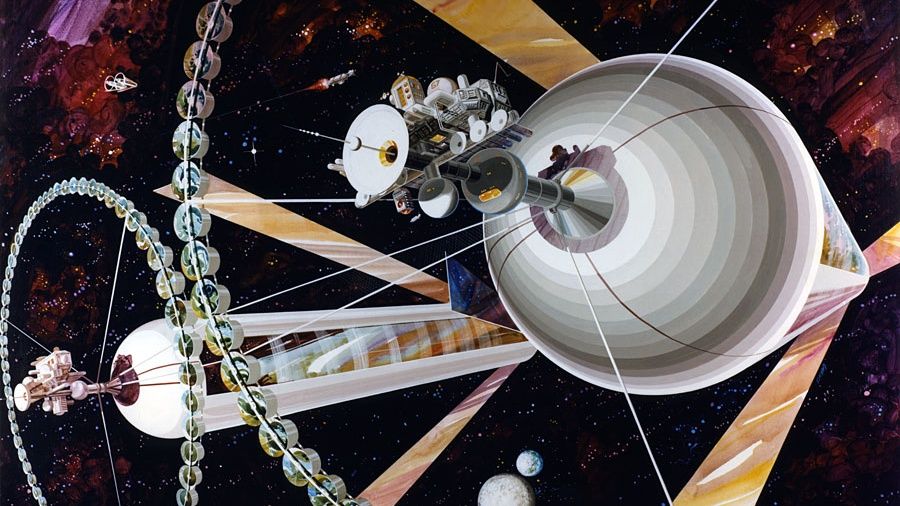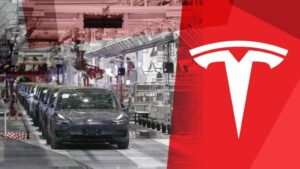
The vision of vast cities in space, once championed by physicist Gerard K. O’Neill, has not materialized as anticipated. In the 1970s, O’Neill, a professor at Princeton University, passionately advocated for self-sufficient cylindrical habitats that would house millions of people, allowing them to view Earth from above. His dream captured public imagination, leading to appearances on television, a best-selling book titled “The High Frontier,” and even a testimony before the U.S. Congress.
As of 2025, the reality of living in space remains starkly different. Only 290 astronauts have spent time in orbit, primarily on the International Space Station and other modest platforms like Russia’s Mir and China’s Tiangong. O’Neill’s ambitious plans seemed visionary at the time, proposing that by the turn of the century, humanity could establish thriving communities at the L5 Lagrange point between Earth and the moon, with habitats accommodating millions.
The L5 Society, founded by enthusiasts of O’Neill’s ideas, adopted the optimistic motto: “L5 by ’95!” Central to O’Neill’s concept was the use of rotation to create centrifugal force, simulating gravity inside these habitats. His largest design, Island Three, would have measured four miles (6.4 kilometers) wide and 20 miles (32 kilometers) long, offering 500 square miles (1,294 square kilometers) of living space, including parks and recreation areas.
O’Neill envisioned a clean environment, with separate cylinders for industry and agriculture. He proposed a commuting system using “commuterspheres” powered by electric motors, costing approximately 50 cents per passenger in 1970s currency. Yet, despite the allure of these concepts, the transition from dream to reality has proven challenging.
O’Neill’s aspirations emerged during a period of optimism following the Apollo program. Yet, the social and political climate of the late 1960s and early 1970s, marked by the disillusionment of the Vietnam War and growing environmental concerns, influenced his thinking. He sought to inspire his students at Princeton by framing engineering challenges that incorporated economic and social considerations, asking questions about the suitability of planetary surfaces for technological societies.
The late 1972 report from the Club of Rome, titled “Limits to Growth,” predicted dire consequences such as overpopulation and resource depletion. O’Neill countered that if Earth was reaching its limits, humanity could find solutions beyond its atmosphere. He argued that space offers abundant resources, solar energy, and potential living space without polluting the Earth.
In “The High Frontier,” O’Neill asserted that the technology necessary for these habitats existed or was within reach. He proposed using materials from lunar or asteroid mining, transported via a “mass driver,” an electromagnetic launch system powered by sunlight. This innovation, akin to a conveyor belt of launches, could facilitate the construction of these ambitious habitats.
O’Neill recognized that simulating gravity would be crucial for human habitation in space. Studies indicated that humans could tolerate rotation rates of one to three rotations per minute, while rates above four could cause discomfort. His designs included counter-rotating cylinders to ensure stability and a simulated day/night cycle to promote health among inhabitants.
However, the feasibility of O’Neill’s vision faced several hurdles. While the technology for the International Space Station has been developed, the engineering challenges associated with building habitats like Island Three remain largely untested. A significant setback was the underperformance of the space shuttle program. Initially envisioned for hundreds of launches annually, the shuttle managed only 135 missions from its first flight in 1981 to its final flight in 2011.
Moreover, O’Neill’s estimated cost for a 20-mile-long habitat was around $200 billion in the 1970s, which, adjusted for inflation, translates to approximately $1.1 trillion in today’s currency, raising questions about funding and prioritization.
Social implications also cast a shadow over O’Neill’s dream. The prospect of alleviating overpopulation through space habitats seems limited when considering that Earth’s population exceeds 8 billion. Concerns persist regarding who would have access to such habitats and whether they would exacerbate global inequalities. The history of urbanization suggests that the affluent are more likely to benefit from such advancements.
Despite these challenges, O’Neill’s vision remains significant. Space habitats could provide a refuge from Earth’s disasters, contributing to humanity’s long-term survival. The dream of living in space also symbolizes the aspirations and potential of technology that have shifted since the 1970s.
Reflecting on O’Neill’s vision prompts questions about the trajectory of human innovation. The optimism of the 1970s, which envisioned a future filled with technological wonders and possibilities, contrasts sharply with the current landscape of global challenges, including conflict, environmental degradation, and authoritarianism. In light of this, one wonders whether humanity failed to achieve its potential or whether the future itself has fallen short of expectations.





